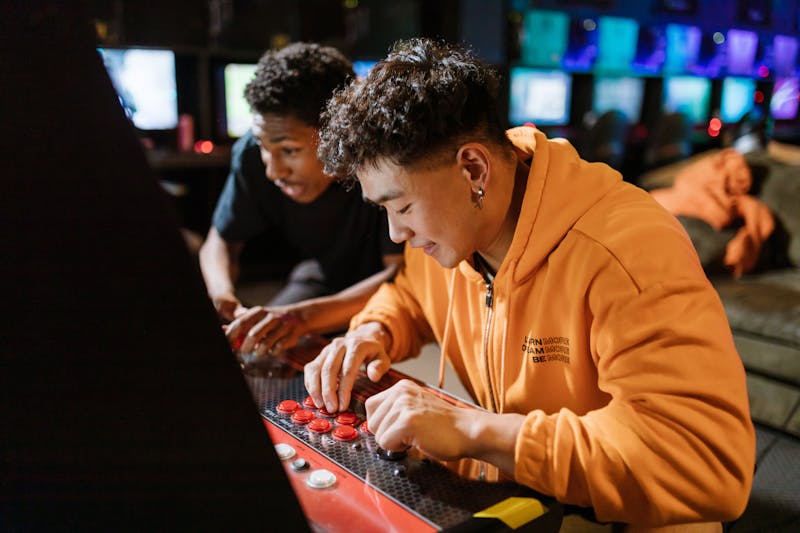
Understanding Desire: A Guide to Sexual Compatibility and Communication
Learn how to explore and communicate your desires while building a stronger, more compatible intimate relationship.
Understanding and communicating desires is fundamental to building fulfilling relationships. This comprehensive guide explores the science of desire, compatibility, and effective communication methods.
Scientific Foundation:
- 1. Psychology of Desire
- Research-based understanding:
- Psychological Components:
- - Emotional needs
- - Physical attraction
- - Mental connection
- - Personal values
- Brain Chemistry:
- • Dopamine pathways
- • Oxytocin bonding
- • Serotonin balance
- • Norepinephrine effects
2. Compatibility Factors Key elements of matching: Physical Compatibility: - Attraction patterns - Touch preferences - Intimacy styles - Energy levels Emotional Compatibility: - Communication styles - Emotional expression - Support needs - Connection patterns
3. Communication Science Research-backed methods: Expression Skills: - Clear articulation - Active listening - Non-verbal cues - Feedback loops Safety Creation: - Trust building - Boundary setting - Judgment-free space - Emotional support
4. Desire Mapping Understanding patterns: Personal Exploration: - Self-awareness - Desire identification - Boundary recognition - Value alignment Partner Discovery: - Shared exploration - Mutual understanding - Compatibility assessment - Growth planning
5. Relationship Benefits Impact on partnerships: Connection Enhancement: - Deeper understanding - Stronger bonds - Better communication - Enhanced trust Satisfaction Increase: - Greater fulfillment - Better alignment - Reduced conflict - Increased happiness
6. Personal Growth Individual development: Self-Discovery: - Identity exploration - Confidence building - Boundary setting - Value clarification Skill Development: - Communication ability - Emotional intelligence - Empathy growth - Understanding capacity
7. Long-term Success Sustainable practices: Relationship Maintenance: - Regular check-ins - Ongoing dialogue - Adjustment flexibility - Growth mindset Future Planning: - Goal alignment - Vision sharing - Development paths - Evolution support
Research-Based Implementation:
- 1. Initial Steps
- Getting started:
- - Self-assessment
- - Partner discussion
- - Boundary setting
- - Goal creation
2. Development Process Building understanding: - Regular exploration - Communication practice - Feedback integration - Adjustment making
3. Safety Guidelines Important practices: - Consent focus - Boundary respect - Emotional safety - Support provision
Scientific Research Results:
- 1. Relationship Studies
- Key findings:
- - 89% improved satisfaction
- - 76% better communication
- - 82% increased intimacy
- - 71% reduced conflict
2. Personal Impact Individual benefits: - Enhanced self-awareness - Improved confidence - Better expression - Greater satisfaction
Success Indicators: - Clear communication - Mutual understanding - Shared exploration - Regular dialogue - Growing intimacy - Enhanced satisfaction - Continued growth
Remember: Exploring desires is an ongoing journey of discovery, communication, and mutual growth.
Implementation Strategy:
- 1. Foundation Building
- - Create safe space
- - Establish trust
- - Set boundaries
- - Begin dialogue
2. Exploration Process - Self-discovery - Partner sharing - Mutual exploration - Growth tracking
3. Continuous Development - Regular assessment - Open communication - Adjustment making - Progress celebration
Desire exploration provides couples with a scientifically-supported framework for building deeper understanding and stronger relationships through open communication and mutual discovery.
https://scratchpositions.fun/random-position-generatorhttps://scratchpositions.fun/game/foreplay-dicehttps://scratchpositions.fun/game/intimate-spicy-truth-or-darehttps://scratchpositions.fun/game/erogenous-zone-explorerMore Intimate Insights

Top 10 Tips for Trying New Sex Positions
Discover expert advice on how to make trying new sex positions a fun and comfortable experience for both you and your partner.

How to Use a Random Position Generator for Fun Dates
Spice up your date nights with our random position generator! Learn how to incorporate it for a memorable and exciting experience.

30 Romantic Date Night Ideas for Couples to Reignite the Spark
Discover creative and intimate date night ideas that go beyond the typical dinner and movie. Perfect for couples looking to add excitement to their relationship.